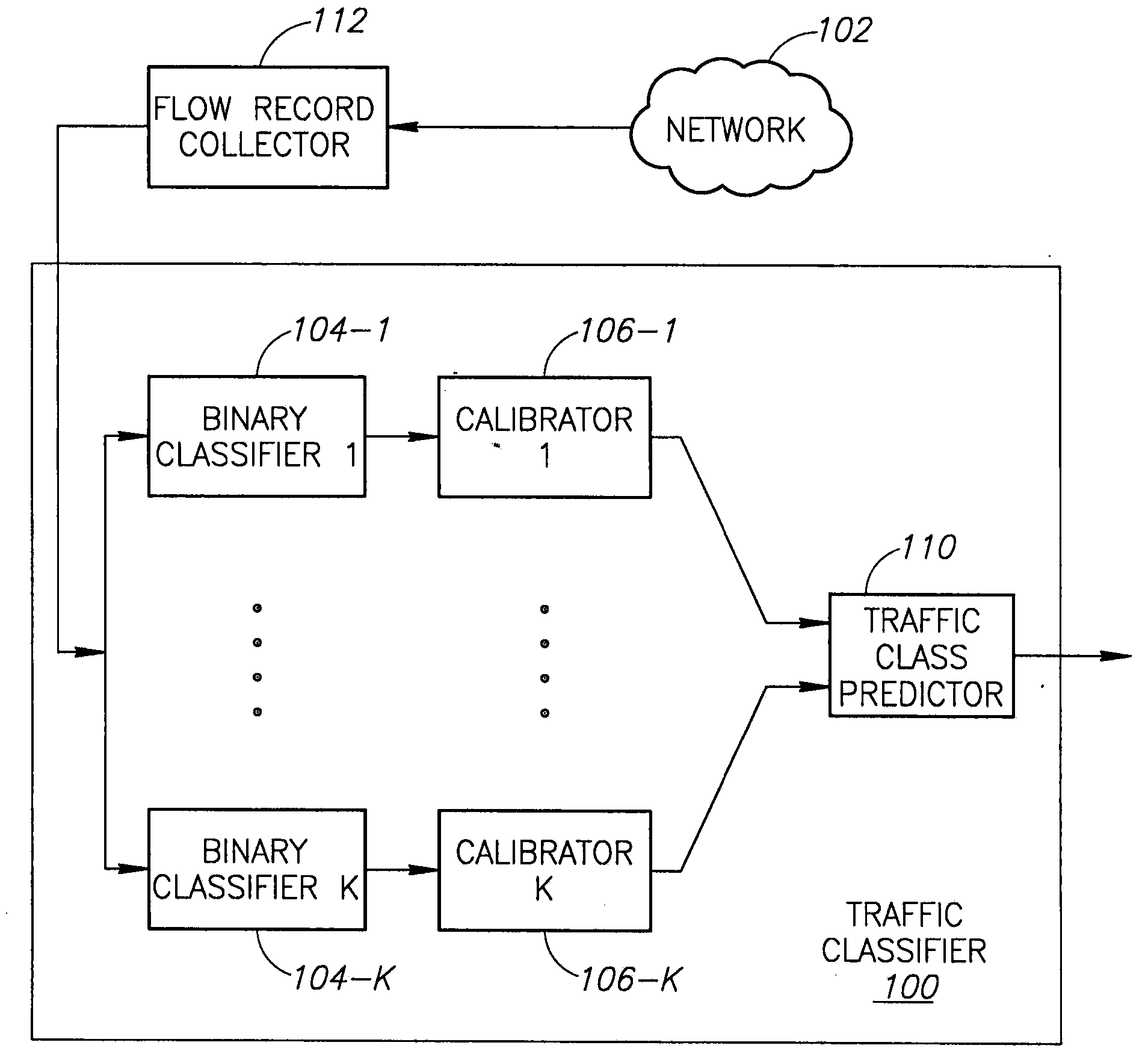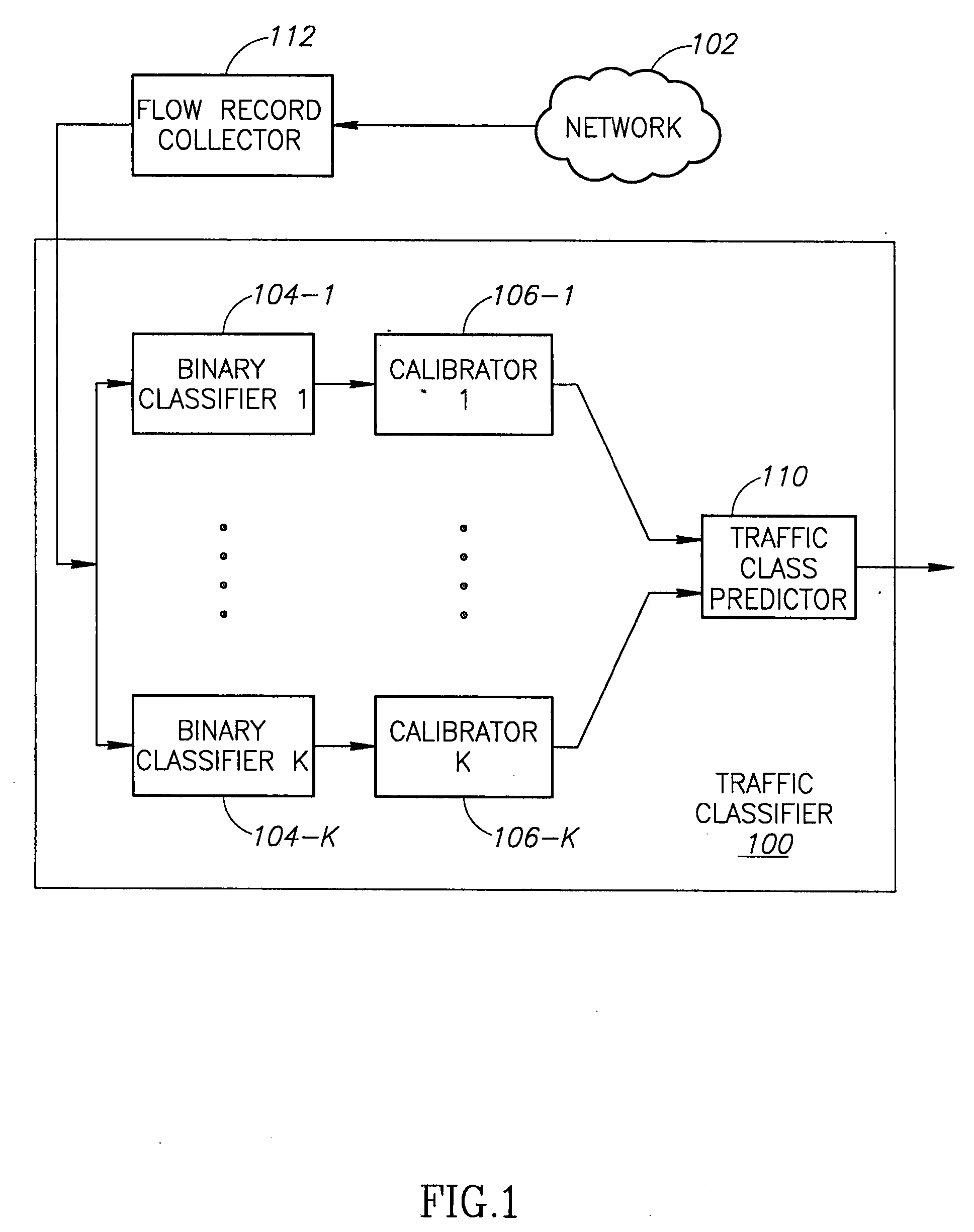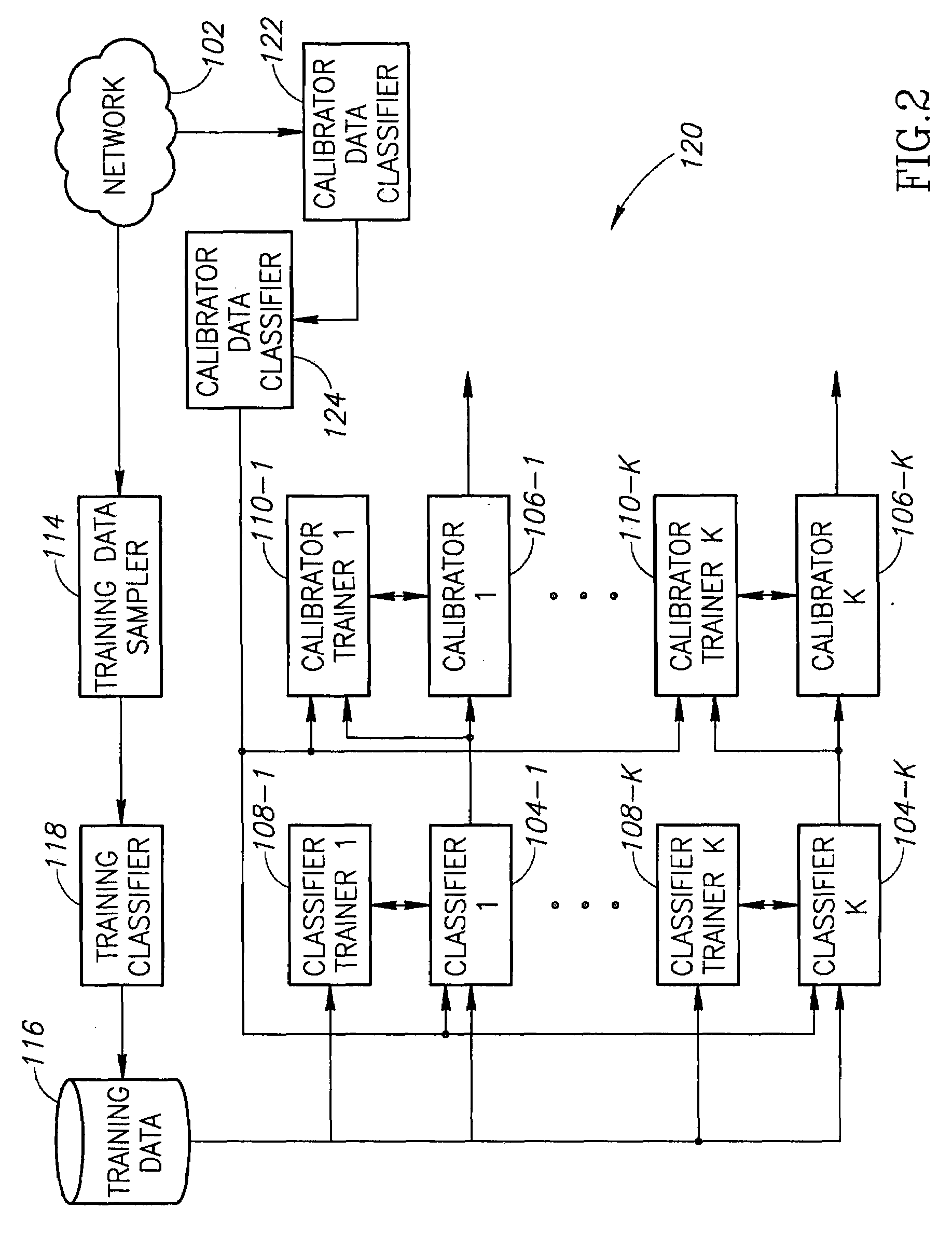Scalable traffic classifier and classifier training system
a classifier and classifier technology, applied in the field of packet network classification, can solve the problems of inability to deploy a wide-scale, inherently unreliable fixed port based classification, and high cos
- Summary
- Abstract
- Description
- Claims
- Application Information
AI Technical Summary
Problems solved by technology
Method used
Image
Examples
Embodiment Construction
[0024]Embodiments of a robust and scalable traffic classifier and methods for training such traffic classifiers are described herein. In the Figures, various objects are identified with reference numbers. If there are multiple instances of the same object in a figure, they will be referred to by the same reference number but with a different suffix number appended. In the following discussion, if a reference is made to a reference number that identifies multiple objects but without a suffix number appended, and then the reference is to all the multiple objects as a group.
Traffic Classifier
[0025]FIG. 1 is a block diagram of a traffic classifier 100. The traffic classifier 100 is coupled with a flow record collector 112 and a network 102. The network 102 carries traffic flows that are generated by applications (not shown). The traffic classifier 100 is configured to classify traffic flows in the network 100 as belonging to one of a plurality of classes. Each class represents a type of...
PUM
 Login to View More
Login to View More Abstract
Description
Claims
Application Information
 Login to View More
Login to View More - R&D
- Intellectual Property
- Life Sciences
- Materials
- Tech Scout
- Unparalleled Data Quality
- Higher Quality Content
- 60% Fewer Hallucinations
Browse by: Latest US Patents, China's latest patents, Technical Efficacy Thesaurus, Application Domain, Technology Topic, Popular Technical Reports.
© 2025 PatSnap. All rights reserved.Legal|Privacy policy|Modern Slavery Act Transparency Statement|Sitemap|About US| Contact US: help@patsnap.com



